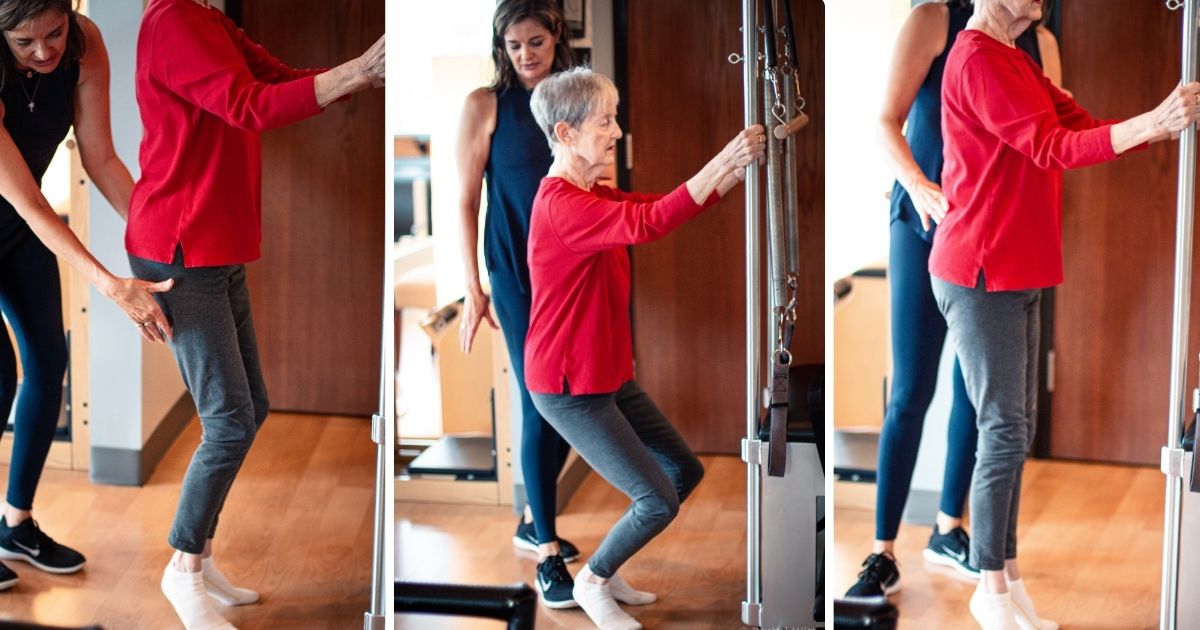As we gracefully move through the different stages of life, maintaining balance becomes increasingly important. Balance isn’t just about preventing falls; it’s about confidence, mobility, and overall quality of life. Balance problems are tied to falls, which can result in bruises, sprains, wounds, broken bones, concussions or worse. One-third of adults over 65 and more than half of those over 75 fall each year. For those of us over 50, at Wilder Pilates we work on incorporating balance-focused exercises into our routine helping to make a world of difference in our daily activities. Pilates, with its emphasis on core strength, stability, and controlled movements, is a fantastic way to enhance your balance and keep you moving with ease and grace.
Why Balance Matters More as We Age
As we age, our bodies naturally undergo changes that can affect balance. Muscle strength diminishes, reflexes slow down, shorter strides, loss of sensory elements, inability to integrate information and motor control and joint flexibility can decrease. These changes can make everyday activities, like walking on uneven surfaces or reaching for objects, more challenging and risky. Improving balance helps:
- Prevent Falls: Falls are a leading cause of injury among older adults. Enhancing your balance reduces the risk of falling and the potential for serious injuries.
- Boost Confidence: Better balance leads to greater confidence in your ability to move and engage in activities you love.
- Improve Mobility: Strong balance helps maintain your independence, allowing you to move around more freely and safely.
How Pilates Helps Improve Balance
Pilates is an excellent exercise method for improving balance, particularly as we age. Here’s how:
- Core Strength: A strong core is the foundation of good balance. Pilates exercises target the deep abdominal muscles, lower back, and pelvic floor, creating a solid base of support. A strong and connected Powerhouse is key!
- Stability and Control: Pilates emphasizes slow, controlled movements that enhance stability and coordination. This mindful approach helps you become more aware of your body’s positioning and movements.
- Flexibility and Strength: Pilates stretches and strengthens muscles, improving joint flexibility and overall body strength, which are crucial for maintaining balance. We work the muscles in their concentric and eccentric phases.
- Mind-Body Connection: Pilates requires focus and concentration, helping to improve your mind-body connection. This heightened awareness translates to better balance and posture in everyday life.
Pilates Exercises to Improve Balance
Here are some Pilates exercises you can incorporate into your routine to help enhance your balance:
1. Single Leg Stand
- How to do it: Stand tall with feet hip-width apart. Shift your weight to one leg and lift the other leg, bending the knee. Hold for 10-15 seconds, then switch legs. Repeat 3-5 times on each side.
- Benefits: Strengthens the muscles around the ankles and knees while improving your overall balance.
2. Leg Circles
- How to do it: Lie on your back with one leg extended toward the ceiling and the other leg bent with the foot flat on the floor. Slowly circle the raised leg clockwise and then counterclockwise. Repeat 5-8 times, then switch legs.
- Benefits: Enhances core stability and hip flexibility.
3. Standing Marching
- How to do it: Stand tall with your feet underneath your hips and close together. Lift one knee toward your chest, lower it, and then lift the other knee. Continue alternating legs in a marching motion for 1-2 minutes. Try not to sway too much side to side and land quietly down on the floor with your feet. You can also do this sitting.
- Benefits: Strengthens the hip flexors and core, promoting better balance, works coordination.
4. Sidekick Leg Lifts
- How to do it: Lie on your side with your legs straight and stacked. Bring your legs forward about 30 degrees. Lift the top leg to about hip height and lower it back down. Repeat 10-15 times, then switch sides.
- Benefits: Strengthens the hip abductor muscles, which are vital for balance and stability.
5. Standing Roll Down
- How to do it: Stand tall with feet under the hips. Slowly roll down, vertebra by vertebra, reaching toward your toes. Hold for a moment, then slowly roll back up to standing. Repeat 5-8 times.
- Benefits: Improves flexibility in the spine and hamstrings while promoting better posture and core control.
Conclusion
Embracing Pilates as part of your fitness routine can make a significant difference in maintaining and improving your balance as you age. It’s never too late to start investing in your well-being. Remember, balance is not just about staying upright—it’s about living a confident, active, and independent life. So, why not give Pilates a try and experience the benefits for yourself?
Want more? I have a free guide of 7 moves to get you stronger. I call it “Pilates in your Pocket” and with it you get free video tutorials and real time workouts with lots of other great info to help you build a strong foundation allowing you to take your Pilates to the next level!

